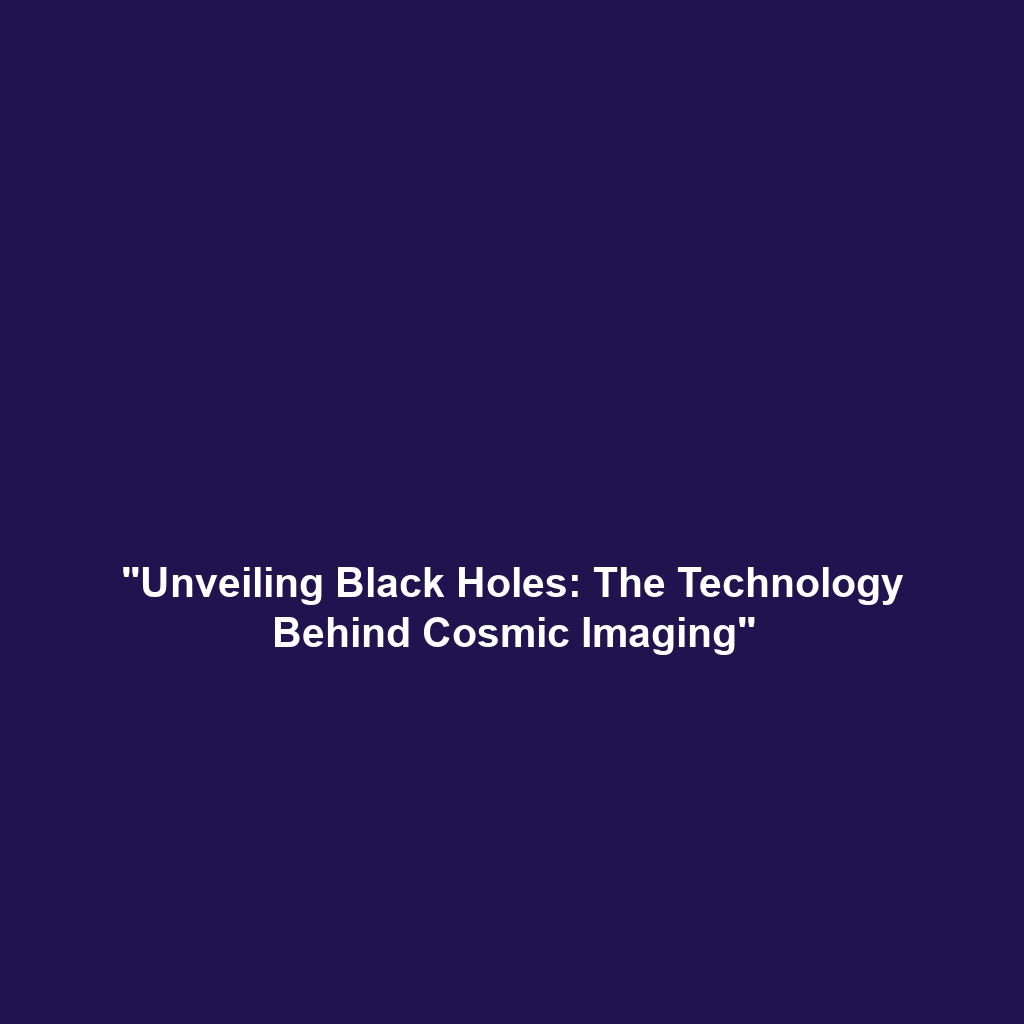<>
The Process and Technology Behind Imaging a Black Hole
Imaging a black hole represents one of the most significant advances in modern astrophysics, allowing scientists to observe phenomena previously deemed unimaginable. This achievement was first publicly showcased in April 2019 when the Event Horizon Telescope (EHT) revealed the shadow of the black hole in the center of the galaxy M87. The process involves a complex interplay of technology, theory, and international collaboration, highlighting the importance of black holes in our understanding of the universe.
Key Concepts of Imaging Black Holes
To appreciate the intricacies of imaging black holes, it’s essential to understand several key concepts:
1. Event Horizon Telescope (EHT)
The EHT is a global network of synchronized radio telescopes, effectively functioning as a planet-sized telescope. By observing at millimeter wavelengths, it captures the electromagnetic radiation emitted by gases surrounding black holes, allowing for the construction of detailed images.
2. Resolution and Interferometry
Imaging black holes requires extraordinary resolution, attainable through a technique known as very long baseline interferometry (VLBI). This method combines signals from multiple radio telescopes to simulate a larger telescope, enabling researchers to resolve images at unprecedented detail.
3. Theoretical Framework
The successful imaging of black holes is underpinned by the theoretical frameworks established by general relativity. Understanding the physics governing the gravitational effects around black holes is crucial for interpreting the images produced.
Applications and Real-World Uses
The process and technology behind imaging black holes have profoundly impacted various scientific fields:
- Astronomy: Enhanced understanding of galactic evolution and structure.
- Physics: Test theories of relativity by observing black hole behavior.
- Technology Development: Innovations in imaging and data processing techniques applicable across various scientific disciplines.
This demonstrates how imaging technology is pivotal in advancing knowledge within the category of black holes.
Current Challenges in Imaging Black Holes
Despite the groundbreaking progress, challenges persist in the realm of black hole imaging:
- Data Volume: The EHT generates an immense volume of data, requiring advanced processing capabilities.
- Atmospheric Interference: Weather conditions can significantly affect observations, limiting data collection rates.
- Signal Calibration: Accurate calibration is crucial for ensuring the fidelity of images produced.
Future Research and Innovations
Looking ahead, several innovations and research initiatives are poised to advance our ability to image black holes:
- AI and Machine Learning: These technologies are expected to enhance image reconstruction from EHT data.
- Expanding the EHT Network: Adding more observing sites globally to improve resolution and data quality.
- Next-Gen Telescopes: Development of telescopes specifically designed to observe at higher frequencies for improved clarity.
Conclusion
In summary, the process and technology behind imaging a black hole are at the frontier of astrophysics, providing unprecedented insights into these enigmatic entities. Ongoing research promises to unveil even more secrets, establishing a deeper understanding of the cosmos. For those interested in further exploring black holes and related astronomical phenomena, consider visiting our articles on future technologies in astronomy and theoretical models of black holes.

Leave a Reply